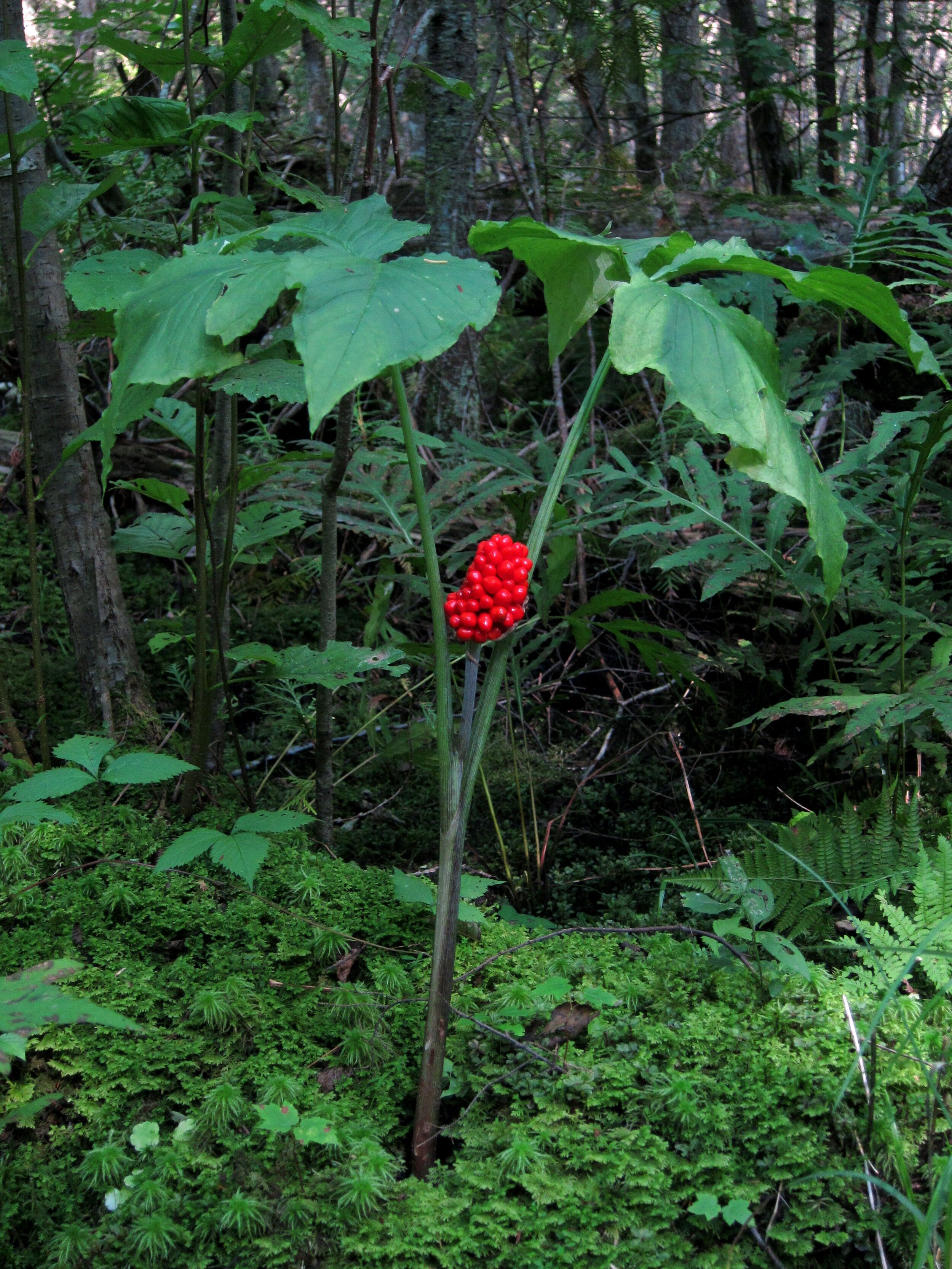Photo by Michael Janke licensed under CC BY-ND 2.0.
Deer populations in North America are higher than they have been at any point in history. Their explosion in numbers not only leads to series health issues like starvation and chronic wasting disease, it has also had serious impacts on regional plant diversity. Wherever hungry herds of deer go, plants disappear from the landscape. However, the impacts of deer on plants aren’t limited to species they can eat. Research on Jack-in-the-Pulpit (Arisaema triphyllum) has shown that deer can have plenty of surprising indirect impacts on plants as well.
Though I wouldn’t put anything past a hungry deer, plants like Jack-in-the-Pulpit aren’t usually on the menu for these ungulates. Their leaves, stems, and flowers are chock full of raphide crystals that will burn the mouths and esophagus of most herbivores. Still, this doesn’t mean deer aren’t impacting these plants in other ways. Because deer are congregating in high abundance in our ever-shrinking natural spaces, they are having serious impacts on local growing conditions. Wherever deer herds are at high numbers, forests are experiencing soil compaction, soil erosion, and a disappearance of soil leaf litter (also due in part to invasive earthworms). Thanks to issues like these, plants like Jack-in-the-Pulpit are undergoing some serious changes.
Like many aroids, sex expression in the genus Arisaema is fluid and relies on energy stores. Smaller plants store less energy and tend to only produce male flowers when they bloom. Pollen, after all, is cheap compared to eggs and fruit. Only when a plant has stored enough energy over the years will it begin to produce female flowers in addition to males and only the largest, most robust plants will switch over entirely to female flowers. As you can imagine, the ability of a plant to acquire and store enough energy is dependent on the quality of the habitat in which it grows. This is where deer enter into the equation.
High densities of deer inevitably cause serious declines in habitat quality of plants like Jack-in-the-Pulpit. As leaf litter disappears and soil compaction grows more severe, individual plants have a much harder time storing enough energy each growing season. In places where deer impacts are heaviest, the sex ratios of Jack-in-the-Pulpit populations begin to skew heavily towards males because individual plants must grow much longer before they can store enough energy to produce female flowers. It doesn’t end there either. Not only does it take longer for a plant to begin producing female flowers, individual plants must also reach a much larger size in order to produce female flowers than in areas with fewer deer.
Photo by Charles de Mille-Isles licensed under CC BY-ND 2.0.
As mentioned, seed production takes a lot of energy and any plant that is able to produce viable fruits will have less energy stores going into the next season. This means that even if a plant is able to produce female flowers and successfully set seed, they will have burned through so much energy that they will likely revert right back to producing only male flowers the following year, further skewing the sex ratios of any given population towards males. Interestingly, this often results in more individuals being produced via clonal offshoots. The more clones there are in a population, the less diverse the gene pool of that population becomes.
Without actually eating the plants, deer are having serious impacts on Jack-in-the-Pulpit population dynamics. I am certain that this species isn’t alone either. At least Jack-in-the-Pulpit is somewhat flexible in its reproductive behaviors. Other plants aren’t so lucky. I realize deer are a hot button issue but there is no getting around the fact that our mismanagement of their natural predators, habitat, and numbers are having serious and detrimental impacts on wild spaces and all the species they support.
Further Reading: [1]



